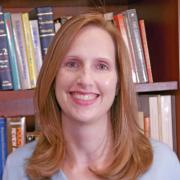The Beauty of Early Childhood Mathematics: Playful Math = Engaged Learning

You are here
Mathematicians often say that they find math beautiful—a sentiment that used to leave me scratching my head. My perspective changed while working on the July issue of Young Children, which describes math learning experiences that are meaningful and enjoyable for children and teachers.
Since research shows that math is a topic some teachers find stressful, I hope readers will agree after reading these articles that there is beauty in early childhood math. Most beautiful is the spark in a child’s eye when a foundational concept clicks in her mind—it’s beautiful in the moment and in the promise it holds for the future. As a couple of these cluster articles explain, mathematical understanding in the early years is a strong predictor of later academic success across subject areas.
Another source of beauty in early childhood math emerges from how it can be taught: playfully. From board games to scavenger hunts for shapes, teachers can create math activities that are playful. Teachers can also highlight features of children’s play that are mathematical.
This cluster begins with carefully crafted math activities that feel like games. “Playful Math Instruction in the Context of Standards and Accountability” by Deborah Stipek provides several examples of engaging activities that show how to use standards, curricula, and assessments to support—not stifle—math learning through play. As Stipek writes, “Abundant research has demonstrated that young children enjoy learning math and can learn far more than was previously assumed—without a single flash card or worksheet.”
The article “Not All Preschool Math Games Are Created Equal” by Sally Moomaw combines rigorous research and teachers’ expertise to offer guidance for using four different types of board games to foster children’s mathematical development. From simple games that give children concrete ways to represent number to more challenging games that support a mental number line, teachers will learn how to effectively use board games with 3-, 4-, and 5-year-olds.
“More than Counting: Learning to Label Quantities in Preschool” by Hoa Nha Nguyen, Elida V. Laski, Dana L. Thomson, Martha B. Bronson, and Beth M. Casey takes us a little deeper into how preschoolers develop an understanding of labeling quantities and counting. The authors explain that “When children learn that specific number words can be used to describe certain amounts, they begin to understand that numerosity is a unique ... attribute of the world.” The article also discusses the errors young children often make—giving their teachers a new lens on the beautiful moments in this developmental trajectory.
“‘Making Change’ in Second Grade: Exploring Money through Project-Based Learning” by Karen Capraro reveals yet another way that math in the early years is beautiful: it delights children to acquire a new and powerful way to understand their environment. After discovering that her second graders have forgotten all they learned in first grade about coins, Capraro—their teacher—decides to embark on a series of student-driven projects based on a large jar of coins. Offering readers a compelling example of meeting standards through playful instruction, this class engages in counting, graphing, mapping, and grasping the values of coins—and more!
To complete the cluster, “Mathematical Structure and Error in Kindergarten” by E. Paul Goldenberg, Sharon J. Miller, Cynthia J. Carter, and Kristen E. Reed helps teachers see children’s errors as clues not only to their misconceptions but also to their current and growing understandings. Through detailed examples with two students, the authors demonstrate that “in general, the most useful place to intervene—adding challenge, correcting errors, or calling for reflection—is where the child’s intellectual growth is currently most rapid.” Errors provide important clues as to which concepts children are beginning to understand.
Although the cluster does not directly address the math anxiety that many teachers of young children report feeling, my hope is that the examples of playful math in this issue will inspire teachers to try some of these ideas stress free. As teachers engage in the enjoyable mathematics instruction discussed here, they will see children’s understanding grow. And when children make mistakes, teachers will be able to use those errors as signals for the types of new learning opportunities to provide. Even better, by creating mathematically playful classrooms, teachers will be sharing with children a new way to explore, understand, and discuss their world.
Is your classroom full of children’s artwork? We would love to feature it in Young Children! Email [email protected] for details.
These heart-warming drawings were created by the 6-year-old nephew of an NAEYC staff member.
Looking for great ways to engage preschoolers in math? The October/November TYC will be a special math-focused issue. Check it out here.
Lisa Hansel, EdD, is the editor in chief of NAEYC's peer-reviewed journal, Young Children.
